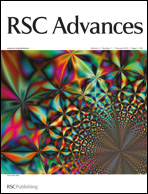Recent advances of sodium borohydride reduction in coal water slurry desulfurization: integration of chemical and electrochemical reduction
Abstract
Clean fuel technologies have been widely developed in current society because fuel combustion can directly bring about the emission of hazardous gasses, i.e. SO2, sulfate particulate matter (SPM), resulting in environmental pollution and other related problems that endanger public heath and community property; as well as reducing the life of the engine due to corrosion. The research efforts for developing conventional hydrodesulfurization (HDS) and alternative desulfurization methods such as selective adsorption, biodesulfurization, oxidation/extraction (oxidative desulfurization), etc. for removing these refractory sulfur compounds from liquid fuel products are on the rise. The reductive desulfurization method under ambient conditions has rarely been researched. This paper reviews the current status of various desulphurization techniques being studied worldwide. It presents an overview of novel emerging technologies of chemical and electrochemical reduction (CECR) for deep desulfurization of coal water slurry (CWS) so as to provide a new way of thinking about ultra-clean fuel technology.


 Please wait while we load your content...
Please wait while we load your content...